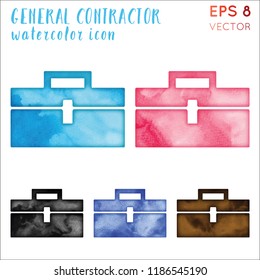To Make Sure The Success Of Your Painting Task, It Is Essential To Be Familiar With The Considerable Differences In Between Exterior And Interior Paint. Discover The Important Information You Require Prior To Beginning Your Task
To Make Sure The Success Of Your Painting Task, It Is Essential To Be Familiar With The Considerable Differences In Between Exterior And Interior Paint. Discover The Important Information You Require Prior To Beginning Your Task
Blog Article
Content Composed By-Fitzpatrick Schmitt
When you're choosing between interior and exterior paint, it's necessary to comprehend their fundamental differences that influence both efficiency and appearances. Interior paints are crafted for reduced VOC levels and smoother coatings, making them optimal for interior rooms, while outside paints are developed to endure extreme weather and UV direct exposure. Each kind offers a distinctive purpose, but knowing when to utilize one over the other can considerably affect your task's outcome. So, what factors should you consider when making your option?
Structure and Formula
When selecting between exterior and interior paint, comprehending their structure and formula is crucial. Inside paints generally contain a lower amount of unstable natural compounds (VOCs), making them safer for indoor air quality. You'll see they usually have a smoother finish, which enhances their capability to resist spots and allows for simpler cleansing. They're created to hold up against the roughness of interior settings, consisting of differing moisture degrees and temperature changes.
On the other hand, exterior paints are developed to sustain harsher conditions. They usually have greater degrees of pigments and ingredients to resist fading from UV rays, in addition to to avoid mold and mold and mildew growth. Their structure includes much more binders and materials, which provide better bond to surface areas revealed to the aspects. This guarantees the paint can stand up to rain, snow, and rising and fall temperature levels without peeling off or fracturing.
Efficiency and Sturdiness
Assessing performance and toughness is important when selecting between interior and exterior paint. Inside https://fernandotdluc.tokka-blog.com/31619828/accomplishing-the-most-effective-paint-finish-is-crucial-for-the-success-of-your-task-find-out-which-option-will-certainly-boost-your-space-and-accommodate-your-lifestyle-preferences is designed for surface areas that experience much less deterioration. It typically resists fading and scuffing, making it excellent for living areas and bed rooms. However, it may not stand up well in high-moisture areas like bathroom and kitchens without correct formula.
On https://interiorpaintersnearme00998.blog-ezine.com/31493157/case-study-turning-a-boring-space-into-a-colorful-place-a-local-painter-s-improvement-story , outside paint faces harsher conditions. https://interior-painter-near-me32086.bloggerbags.com/36602976/an-introductory-guide-for-novices-on-how-to-pick-the-perfect-paint-complete-for-your-job to endure UV rays, rain, and temperature level changes. This kind of paint commonly includes ingredients that avoid mold and mildew development, making sure long life in different climates. When you make use of exterior paint, you can anticipate it to last numerous years longer than interior paint, provided it's applied correctly.
An additional key distinction lies in the finish alternatives. Inside paints frequently have a variety of finishes for visual allure, while outside paints focus on longevity over luster. If you're searching for something that can handle the components, exterior paint is your best bet.
In contrast, if you're focused on indoor aesthetics with much less worry for extreme conditions, indoor paint might be ideal. Eventually, clicking here ought to straighten with the certain demands of the atmosphere.
Aesthetic Factors to consider
A fresh coat of paint can change an area, but visual factors to consider play a critical role in your option in between interior and exterior alternatives. When you're picking paint, consider the mood you wish to create. Inside paint allows you to explore a broader range of shades and surfaces, enabling you to express your individual style and boost your home's setting. Whether you choose soft pastels or vibrant tones, the right indoor paint can make your areas feel comfy, dynamic, or tranquil.
On the other hand, outside paint requires to straighten with your home's style and the surrounding atmosphere. Below, you're not just making a style statement; you're also considering aesthetic allure. Selecting shades that balance with your area can increase your home's worth and visual charm. Bear in mind that outside paint is additionally subject to fading and climate changes, so selecting an ageless shade can conserve you from frequent repainting.
Inevitably, take into consideration just how each option fits your vision. By aligning your paint choice with your desired aesthetic, you can produce spaces that mirror your individuality while keeping performance.
Final thought
When it involves choosing paint, comprehending the essential differences in between interior and exterior alternatives is necessary. Inside paints focus on appearances and reduced VOCs, making them best for improving your indoor areas. In contrast, exterior paints are designed for durability and weather condition resistance, protecting your home from the components. By considering your certain requirements and the environment, you can confidently select the best paint to attain the appearance and durability you prefer for your room.
